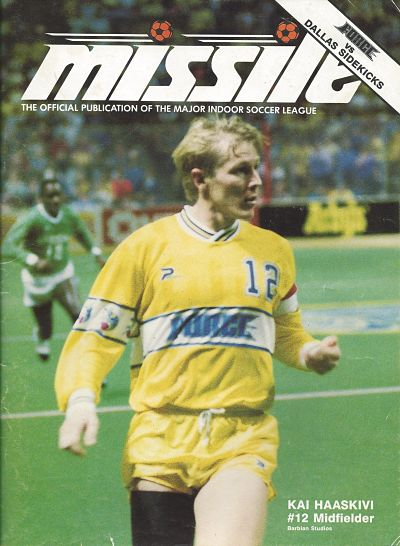Cleveland loves its Browns, Cavs, and Indians. However, there was a time when a fourth pro team, one that played an odd version of the world’s most popular game, captured the hearts of Northeast Ohio sports fans.
In 1978, Earl Foreman and Ed Tepper, two east coast businessmen and sports enthusiasts formed the Major Indoor Soccer League (MISL). Tepper got the idea for the league after watching the Philadelphia Atoms of the outdoor North American Soccer League (NASL) play an exhibition game against Russia’s Red Army team in February of 1974. The match was played in the Spectrum, then home to the NBA’s Philadelphia 76ers and the NHL’s Philadelphia Flyers. The game was played on a hockey rink covered with AstroTurf before nearly 12,000 fans.
It took a few years, but by the late fall of 1978, Foreman and Tepper had a six-team league with the Cleveland Force as one of the charter franchises. The other teams were the Pittsburgh Spirit, the New York Arrows, the Philadelphia Fever, the Cincinnati Kids, and the Houston Summit.
The Force played their very first game on December 26, 1978, in Houston, losing 10 to 3. Their first home game was against the Pittsburgh Spirit on January 6, 1979, in the old Richfield Coliseum, a 7-6 win. The league scheduled 24 games that inaugural season, 12 home, 12 away, with Force averaging about 3,100 fans a game. They finished in last place with 5 wins against 19 losses.
The team was then sold to multi-millionaire Bart Wolstein as the league expanded to 10 teams. Wolstein and his son Scott, like other team owners in the league, tried making the games more of an entertainment spectacle that the whole family could enjoy. To that end, team introductions featured fog machines, lights, loud music, and an appearance by Darth Vader from Star Wars, the team’s name having been inspired by the mystical power mentioned in the movie.
At first, George Lucas, creator of the Star Wars universe, wasn’t keen and Vader was benched. The team and Lucas, though, reached an agreement, and Lord Vader returned. Fan interest steadily increased, even as the team struggled on the pitch.
That changed in the third season as the Force made the playoffs for the first time and average attendance reaching 4,800 a game. The team’s postseason run was cut short as they fell to the Baltimore Blast in a best of 3 series.
The following season, the team tumbled back to a 15 and 29 record, good for sixth place in the MISL’s seven-team Eastern Division. Still, attendance rose slightly, topping 5,000 a game. Meanwhile, teams with better records, notably Baltimore, Buffalo, and St. Louis drew even bigger crowds with the latter leading the league with an astonishing 17,000 fans a game.
Things began to come together for the Force the following year at the gate and on the pitch. The team finished with a record of 29 and 15, just one game behind the first place Baltimore Blast. The second-place finish led to the team’s first playoff series win as the Force downed the Chicago Horizons 3 games to 2. Alas, Baltimore would end Cleveland’s run in the Eastern Semifinals in 5 games. Attendance ticked up to 6,600 fans a game for the season.
The following season saw a similar ending with the Force winning the Eastern quarterfinal series, this time over Pittsburgh, but losing to Baltimore again in the conference finals. This time, though, average attendance doubled to around 13,000 a game. Following the season, two teams folded, and interest league-wide dipped slightly.
For the 1984-85 season, Cleveland topped the league’s average attendance figures at nearly 13,000 a game while finishing third in the Eastern Conference. But once again, Baltimore ended the Force’s postseason in the conference semifinals. The next season, Cleveland finished in first, led the league in attendance once again, and lost in the conference semifinals, this time to Minnesota.
Despite the postseason letdowns, the Force had become a rarity in American sports. They were a soccer team that actually made money. However, the Force saw another semifinal exit following the 1986-87 season as Dallas eliminated them.
The Force finally made it to the MISL Championship Series following the 1987-88 season, only to lose to the powerful San Diego Sockers 4 games to 0. They once again led the league in attendance, but the party was over. Wolstein, frustrated by the lack of cooperation among their fellow owners, as well as difficulties dealing with the player’s union, folded the team.
The MISL immediately awarded the city an expansion franchise which became known as the Crunch. That team played until 2005 in three different leagues, changing its name to the Force in 2002 when it was a member of the second incarnation of the Major Indoor Soccer League.



